Jennifer Scoullar's Blog, page 20
May 4, 2013
Murray Magic
 I’ve been up the Murray in South Australia, on a research trip for my new novel. Am only home briefly, and will be going back up the river again in a few days. It’s been a marvellous and enlightening experience. First, a few facts. The Murray is the third longest navigable river in the world, after the Amazon and Nile, stretching 2,520 kilometres from its source to the sea. The mighty Murray-Darling basin is the third largest water catchment on earth. During my trip this grandeur was very much on show – the river remains stunningly beautiful. But the Murray faces many threats today, and these were on show as well. I was surprised at just how in-your-face the river’s problems are, in South Australia at least. Take the levees. Hundreds of kilometres of levee banks were built after World War One to ‘reclaim’ wetlands for soldier settlers. The once fertile river flats either side soon turned into dry wastelands. The farmers gave up, but the levees remain, protecting a dead landscape from life-giving floods.
I’ve been up the Murray in South Australia, on a research trip for my new novel. Am only home briefly, and will be going back up the river again in a few days. It’s been a marvellous and enlightening experience. First, a few facts. The Murray is the third longest navigable river in the world, after the Amazon and Nile, stretching 2,520 kilometres from its source to the sea. The mighty Murray-Darling basin is the third largest water catchment on earth. During my trip this grandeur was very much on show – the river remains stunningly beautiful. But the Murray faces many threats today, and these were on show as well. I was surprised at just how in-your-face the river’s problems are, in South Australia at least. Take the levees. Hundreds of kilometres of levee banks were built after World War One to ‘reclaim’ wetlands for soldier settlers. The once fertile river flats either side soon turned into dry wastelands. The farmers gave up, but the levees remain, protecting a dead landscape from life-giving floods.
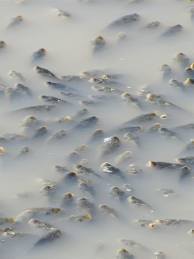 European Carp (actually from Asia) are another example. Old-timers remember a crystal clear river, abounding in aquatic plants, brim-full of Murray Cod and Perch. Millions of carp have actually changed the colour of the river, from clear to muddy. They hoover up the bottom and banks, sucking up water weeds, roots and all, then discharging sediments through their gills. The few plants that survive this treatment, still die because sunlight can no longer penetrate the cloudy water. Native fish and herbivorous water birds such as ducks, swans and spoonbills, have nothing to eat. There were no swans at Swan Reach when I was there. Only pelicans and other fish eating birds, which are thankfully making a small dent in carp numbers.
European Carp (actually from Asia) are another example. Old-timers remember a crystal clear river, abounding in aquatic plants, brim-full of Murray Cod and Perch. Millions of carp have actually changed the colour of the river, from clear to muddy. They hoover up the bottom and banks, sucking up water weeds, roots and all, then discharging sediments through their gills. The few plants that survive this treatment, still die because sunlight can no longer penetrate the cloudy water. Native fish and herbivorous water birds such as ducks, swans and spoonbills, have nothing to eat. There were no swans at Swan Reach when I was there. Only pelicans and other fish eating birds, which are thankfully making a small dent in carp numbers.
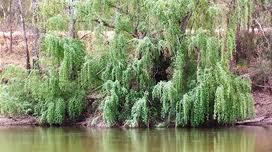 Problems go on and on. The most common trees along the Murray aren’t River Red Gums anymore, but English willows. They were planted along the river to mark its course, during the early years when the natural flood plain extended many square kilometres. Willows choke banks and channels, out-competing native species. They cause algal blooms by dropping leaves in autumn. And they are thirsty trees along an even thirstier river. CSIRO research shows an extra five and a half megalitres of water per year could be returned to the system for every hectare of willow canopy removed! And every drop counts in a country like ours. Incredibly, in the last twenty years the Marne River, (once a major contributor of water to the Murray) has completely dried up, due to dams in the Barossa Valley.
Problems go on and on. The most common trees along the Murray aren’t River Red Gums anymore, but English willows. They were planted along the river to mark its course, during the early years when the natural flood plain extended many square kilometres. Willows choke banks and channels, out-competing native species. They cause algal blooms by dropping leaves in autumn. And they are thirsty trees along an even thirstier river. CSIRO research shows an extra five and a half megalitres of water per year could be returned to the system for every hectare of willow canopy removed! And every drop counts in a country like ours. Incredibly, in the last twenty years the Marne River, (once a major contributor of water to the Murray) has completely dried up, due to dams in the Barossa Valley.
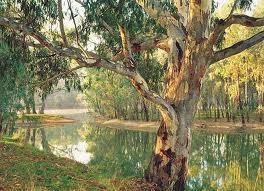 The Murray River has a mysterious allure. As far as 65 million years ago, it was flowing westwards from the Great Dividing Range. Yet in a mere 200 years we have caused so much damage to this beautiful and ancient wonder of the world. Let’s hope Australia can work together to protect the Murray-Darling basin, truly the lifeblood of eastern Australia. In the meantime, I can’t wait to head back on up the river …
The Murray River has a mysterious allure. As far as 65 million years ago, it was flowing westwards from the Great Dividing Range. Yet in a mere 200 years we have caused so much damage to this beautiful and ancient wonder of the world. Let’s hope Australia can work together to protect the Murray-Darling basin, truly the lifeblood of eastern Australia. In the meantime, I can’t wait to head back on up the river …

April 29, 2013
Book Giveaway Winners
 I’m currently on a research trip for my new novel. I’m on a boat going up the Murray, where internet reception is patchy. This makes blogging tricky, but I’ve found reception at Swan Reach for long enough to make a short post announcing the winners of Aussie Author Month’s book giveaway. The winners of the draw are Mary Preston (Wasp Season) and Theresa Lauf (Brumby’s Run). I’ll email both of you privately in order to get your mailing address. Thank you to all the other commenters. It’s great to see so many people appreciating home-grown Aussie fiction!
I’m currently on a research trip for my new novel. I’m on a boat going up the Murray, where internet reception is patchy. This makes blogging tricky, but I’ve found reception at Swan Reach for long enough to make a short post announcing the winners of Aussie Author Month’s book giveaway. The winners of the draw are Mary Preston (Wasp Season) and Theresa Lauf (Brumby’s Run). I’ll email both of you privately in order to get your mailing address. Thank you to all the other commenters. It’s great to see so many people appreciating home-grown Aussie fiction!
Any commenter who missed out can have a signed copy of Wasp Season for $10 or Brumby’s Run for $15 and I will pay the postage. Just drop me an email at jennifer.scoullar@bigpond.com.

April 21, 2013
Happy Earth Day – The Canopy Project
Every year on April 22, more than one billion people take part in Earth Day. Across the globe, individuals, communities, organizations, and governments acknowledge the amazing planet we call home and take action to protect it.
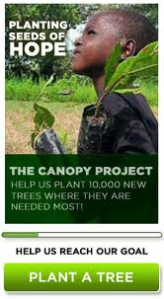 One fabulous Earth Day initiative is the Canopy Project. It aims to plant trees that help communities – especially the world’s impoverished communities – sustain themselves and their local economies. A wonderful by-product of this project is that so many animals have their habitats restored. Trees reverse the impacts of land degradation and provide food, energy and income, helping communities to achieve long-term economic and environmental sustainability. Trees also filter the air and help stave off the effects of climate change. That’s why, earlier this the year, Earth Day Network made a commitment with the Global Poverty Project to plant 10 million trees over the next five years, many of them in the world’s most impoverished places.
One fabulous Earth Day initiative is the Canopy Project. It aims to plant trees that help communities – especially the world’s impoverished communities – sustain themselves and their local economies. A wonderful by-product of this project is that so many animals have their habitats restored. Trees reverse the impacts of land degradation and provide food, energy and income, helping communities to achieve long-term economic and environmental sustainability. Trees also filter the air and help stave off the effects of climate change. That’s why, earlier this the year, Earth Day Network made a commitment with the Global Poverty Project to plant 10 million trees over the next five years, many of them in the world’s most impoverished places.
 Wonderful examples of The Canopy Project can be found all over the globe, including here at home. Landcare Australia worked to help restore vulnerable areas of metropolitan New South Wales and Victoria, focusing on places with unique and threatened animal species. In Brazil, the Canopy Project worked with local communities to plant native trees to help restore the Atlantic Forest, one of the most biologically diverse and severely threatened forest ecosystems in the world. Tree Canada joined the Avatar Home Tree Initiative to restore 800 hectares of pine forest that was devastated by hurricane-force winds in 2005.
Wonderful examples of The Canopy Project can be found all over the globe, including here at home. Landcare Australia worked to help restore vulnerable areas of metropolitan New South Wales and Victoria, focusing on places with unique and threatened animal species. In Brazil, the Canopy Project worked with local communities to plant native trees to help restore the Atlantic Forest, one of the most biologically diverse and severely threatened forest ecosystems in the world. Tree Canada joined the Avatar Home Tree Initiative to restore 800 hectares of pine forest that was devastated by hurricane-force winds in 2005.
Tree cover around the world has never been more important. Congratulations to the Earth Day Network! They have made a commitment with the Global Poverty Project to plant 10 million trees over the next five years in impoverished areas of the world. Please join them to help make this commitment a reality

A Pantster And Proud Of It
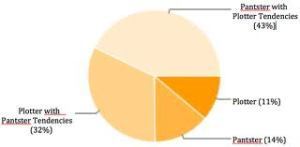 Writers all fall somewhere on the continuum between ‘plotter‘ and ‘pantster’. I’ve written a couple of posts about how screenwriters can teach authors a thing or two about plotting. How to use the three act structure. How it helps to plan out your inciting incident, your midpoint, your protagonist’s ‘dark night of the soul’. In fact my enormous corkboard has plot points pinned all over it. However I feel like a bit of a fraud in this regard, because when it comes to the crunch, I’m a pantster.
Writers all fall somewhere on the continuum between ‘plotter‘ and ‘pantster’. I’ve written a couple of posts about how screenwriters can teach authors a thing or two about plotting. How to use the three act structure. How it helps to plan out your inciting incident, your midpoint, your protagonist’s ‘dark night of the soul’. In fact my enormous corkboard has plot points pinned all over it. However I feel like a bit of a fraud in this regard, because when it comes to the crunch, I’m a pantster.
 33,000 words into the new novel, and my corkboard is struggling to keep up with the unexpected directions my narrative keeps taking. I’m cheating by updating my index cards as I go, pretending that character A was always going to be a pilot, and that character B was always going to have a ten year old daughter. It’s like forging a path into the unknown, and making the map afterwards. But that’s okay, because often it’s only in the writing of the story, that its direction becomes clear. Novel writing is a mysterious and deeply organic process, and it would be boring to always know exactly what was going to happen next.
33,000 words into the new novel, and my corkboard is struggling to keep up with the unexpected directions my narrative keeps taking. I’m cheating by updating my index cards as I go, pretending that character A was always going to be a pilot, and that character B was always going to have a ten year old daughter. It’s like forging a path into the unknown, and making the map afterwards. But that’s okay, because often it’s only in the writing of the story, that its direction becomes clear. Novel writing is a mysterious and deeply organic process, and it would be boring to always know exactly what was going to happen next.
 That doesn’t mean an initial planning phase is wasted, however far the evolving story may depart from its original concept. A plan sets a writer off in the right direction, with a sense of purpose. That much updated, unforgiving corkboard will still shine a glaring spotlight on any ugly plot holes. And the final narrative must still contain every element of a rip-roaring yarn. Just remember that all the possibilities of a story might not show up until you’re well into the journey. Sometimes you need to throw away the plan, and let the magic happen!
That doesn’t mean an initial planning phase is wasted, however far the evolving story may depart from its original concept. A plan sets a writer off in the right direction, with a sense of purpose. That much updated, unforgiving corkboard will still shine a glaring spotlight on any ugly plot holes. And the final narrative must still contain every element of a rip-roaring yarn. Just remember that all the possibilities of a story might not show up until you’re well into the journey. Sometimes you need to throw away the plan, and let the magic happen!

April 13, 2013
Why Themes Count
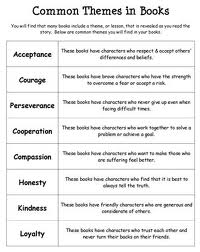 I confess that for a long time, I didn’t quite understand the significance of theme in novels. And that was because I didn’t really know what a theme was. I couldn’t point to it or pin it down. If it was so important, how come it was so elusive? But now I understand that its very mystery is the key to its importance. The central theme of a novel is not presented directly at all. It’s subliminal and must be extracted from the characters, the plot, the setting … in other words, as a reader you need to figure it out for yourself. And what’s more amazing, most of the time, you don’t even know that you’re doing it. That’s where the magic lies! You know intuitively what the story means. You think about it and ask yourself questions. You want to discuss it. The story may haunt your heart and mind long after you close the book.
I confess that for a long time, I didn’t quite understand the significance of theme in novels. And that was because I didn’t really know what a theme was. I couldn’t point to it or pin it down. If it was so important, how come it was so elusive? But now I understand that its very mystery is the key to its importance. The central theme of a novel is not presented directly at all. It’s subliminal and must be extracted from the characters, the plot, the setting … in other words, as a reader you need to figure it out for yourself. And what’s more amazing, most of the time, you don’t even know that you’re doing it. That’s where the magic lies! You know intuitively what the story means. You think about it and ask yourself questions. You want to discuss it. The story may haunt your heart and mind long after you close the book.
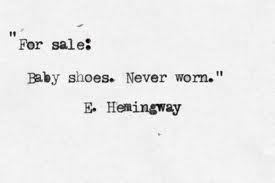 Bestselling novelist Larry Brooks puts it like this. ‘ … without strong thematic intentions … a novel is just a sitcom, literary junk food, a quick hit of cheap-thrills genre that you read to pass the time on a flight.’ That’s not what I want for my books. I don’t expect them to win the Miles Franklin, but I do expect them to have emotional resonance. So I’ve learned to think long and carefully about theme.
Bestselling novelist Larry Brooks puts it like this. ‘ … without strong thematic intentions … a novel is just a sitcom, literary junk food, a quick hit of cheap-thrills genre that you read to pass the time on a flight.’ That’s not what I want for my books. I don’t expect them to win the Miles Franklin, but I do expect them to have emotional resonance. So I’ve learned to think long and carefully about theme.
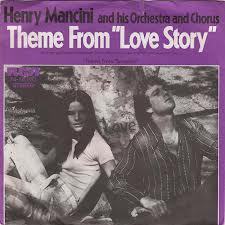 Maybe your book is about the dangers of ignorance, or change versus tradition, or the circle of life. How do you help readers connect with this? Repeating patterns and symbols are good. Allusions can help too. Have characters face the consequences of their behaviour. Have them think aloud. Let them learn a lesson. Serve up views on both sides, so your reader is faced with a dilemma, and must choose. Sometimes, in those marvelous stories that almost write themselves, the theme evolves organically along with the mounting word count. You know perfectly well what the story means, and you trust the reader will know too. This of course is the dream, and it happens more often than you might think. But a powerful theme is too important to leave to chance. It can make the difference between publication and the bottom drawer.
Maybe your book is about the dangers of ignorance, or change versus tradition, or the circle of life. How do you help readers connect with this? Repeating patterns and symbols are good. Allusions can help too. Have characters face the consequences of their behaviour. Have them think aloud. Let them learn a lesson. Serve up views on both sides, so your reader is faced with a dilemma, and must choose. Sometimes, in those marvelous stories that almost write themselves, the theme evolves organically along with the mounting word count. You know perfectly well what the story means, and you trust the reader will know too. This of course is the dream, and it happens more often than you might think. But a powerful theme is too important to leave to chance. It can make the difference between publication and the bottom drawer.
In celebration of Awesome Aussie Author month, I’m giving away a copy each of Brumby’s Run and Wasp Season. Just leave a comment saying if your WIP or favourite novel had a theme song, what would it be? Winners announced April 30th.

April 6, 2013
Sunday With Jenn J Mcleod
Today please welcome author Jenn J Mcleod to Pilyara. Jenn quit Sydney’s corporate chaos to buy a little café in a small town. She now spends her days running a unique, dog-friendly B&B on her NSW property and writing life-affirming novels about friendship, family and small towns in which country roots run deep. Her debut novel A House For All Seasons, has impressed everybody with its moving story of friendship, family and forgiveness. And now, it’s over to Jenn …
‘Thanks for having me Jen. I just finished a fun interview for the Sweet Escape website. It’s a confession really – about how authors fall in love with their fictional characters. As a writer of fiction, I get to play around with features, quirks and characteristics all the time – a bit like a Mr Potato Head (only more attractive!) or maybe a Police Identity-sketch kit (only not so creepy!) As a pantster (the industry term for writing by the seat of one’s pants rather than plotting) I sit at my desk and let the story take me on a journey. Then, along the way, I fall in love with my conflicted characters – the good, the bad and the flawed.
Just like a Mr Potato Head can never be George Clooney, made-up people don’t need to be perfect either. As one of my characters says in House for all Seasons, “I’m a flawed person trying to be good”, and I think it’s the ‘do good’ rather than the ‘be perfect’ that makes a person beautiful. So yes, flawed characters make for a more authentic story, and readers relate to authenticity. They expect it from their authors.
My approach to inventing fictional settings for my small town stories also involves a kind of morphing of favourite features. Four small NSW towns influenced the Calingarry Crossing township in House for all Seasons: Sawtell, Bellingen, Bowraville and Ulmarra – only I plonked it just west of the Great Divide.
I admit to loving a small town setting because small towns provide the perfect stage for conflict and drama – mostly because everything seems amplified and more personal in a small town. I also enjoy debunking small town generalisations. For a start, ‘small town’ in no way means small-minded. And there are other perceptions – namely that people in small towns are laid-back, open and friendly (almost cliched). But underneath they can be quite insular, cliquey, wary – especially of newcomers. I think balance is the key.
When it was time to type the words the end on my latest release, House for all Seasons, I struggled to let go. I’d fallen in love with my made-up town and wasn’t ready to leave. So, although I didn’t intend linking novels, next year’s release – The Simmering Season – picks up secondary threads, weaving them into a school reunion story with a difference; one that brings home more than memories for Calingarry Crossing’s publican, Maggie Lindeman.
With some terrific reviews for House for all Seasons, there is a recurrent comment about both my characters and setting – they are authentic. Authenticity is what my publisher said made her fall in love with House for all Seasons. The secret for me is writing what I know. I moved to a small town, many years ago now, where knowing everyone in town is comforting – until there’s a secret you want to keep! I remember those early days of my tree-change when I moved from Sydney to buy a small cafe in a small country town. Such mixed emotions: excited, terrified—humbled by the wonderful welcome of a very friendly community. It was like coming home. ‘Coming home’ has provided me with an author platform from which to create and promote my small town stories like House for all Seasons: In a country house surrounded by the past, four friends will discover… small towns can keep big secrets.
House for all Seasons is a story about coming home and of country roots that run deep.
In order to claim an unexpected inheritance – the century-old Dandelion House on the outskirts of Calingarry Crossing – four estranged school friends return to their hometown after twenty years and stay a season each to fulfil the wishes of their benefactor, Gypsy.
Poppy, a tough, ambitions journo still craving her father’s approval;
Sara, a breast cancer survivor afraid to fall in love;
Amber, a spoilt socialite addicted to painkillers and cosmetic procedures;
Caitlin, a third generation doctor frustrated by a controlling family and her flat-lining life.House for all Seasons is a story of unravelling friendships and of ties that will forever bind four women to each other and to the century-old Dandelion house.
There are such fabulous town names in Australia. Not until I started coming up with names (checking them in Google to see if they already existed) did I discover some beauties, like the NSW town called Willow Tree. Isn’t that lovely?
Do you have favourite fiction town names – or perhaps know of some uniquely Australian town names to share?’
 Thanks Jenn, for a fascinating post! I know a lot of people, including me, are looking forward to your next release. Don’t forget that in honour of Aussie Author month I’m giving away two of my books (Brumby’s Run and Wasp Season; see previous post). To go into the draw, just leave a comment saying why you love Aussie stories. Winners announced 30th April.
Thanks Jenn, for a fascinating post! I know a lot of people, including me, are looking forward to your next release. Don’t forget that in honour of Aussie Author month I’m giving away two of my books (Brumby’s Run and Wasp Season; see previous post). To go into the draw, just leave a comment saying why you love Aussie stories. Winners announced 30th April.

March 31, 2013
Aussie Author Month – Rural Fiction (Plus A Giveaway!)
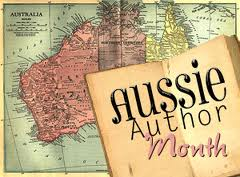 April is Aussie Author Month and celebrates the uniqueness and quality of Australian literature. It was started in 2011 by a group of reviewers and readers who wanted something special to celebrate Aussie authors. Genre and style doesn’t matter, it’s about a love of literature and a desire to promote home-grown reading to a wider community. Another important aspect of Aussie Author Month is recognising that literacy in this country isn’t as widespread as it should be, particularly among Indigenous and remote communities. It aims to raise awareness and fundraise for the Indigenous Literacy Foundation.
April is Aussie Author Month and celebrates the uniqueness and quality of Australian literature. It was started in 2011 by a group of reviewers and readers who wanted something special to celebrate Aussie authors. Genre and style doesn’t matter, it’s about a love of literature and a desire to promote home-grown reading to a wider community. Another important aspect of Aussie Author Month is recognising that literacy in this country isn’t as widespread as it should be, particularly among Indigenous and remote communities. It aims to raise awareness and fundraise for the Indigenous Literacy Foundation.
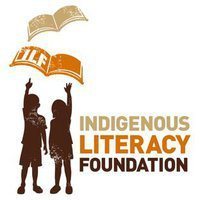 I’m an Aussie rural author, and am proud to be part of a burgeoning publishing success story – one being led exclusively by women writers. In a challenging time for publishers, Aussie rural lit has defied the trends with sales more than tripling in the past four years. Authors such as Rachael Treasure, Nicole Alexander and Fiona Palmer routinely outsell other local fiction.
I’m an Aussie rural author, and am proud to be part of a burgeoning publishing success story – one being led exclusively by women writers. In a challenging time for publishers, Aussie rural lit has defied the trends with sales more than tripling in the past four years. Authors such as Rachael Treasure, Nicole Alexander and Fiona Palmer routinely outsell other local fiction.
One reason for the popularity of this genre, is that the heroines are generally tough, independent and capable people. Unlike the characters in a lot of chick-lit, they are not obsessed with shopping and finding a man. But there is another, more important reason. At the heart of this sort of fiction is a passion for the Australian countryside. Speaking personally, while I love to explore the complexities of human relationships, my narratives are always informed by the bush, together with its flora and fauna.
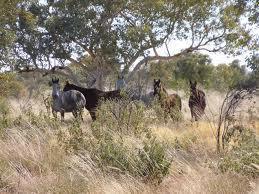 Australia’s wild landscapes are powerful settings. In cities, many people live lives so far removed from nature, that they rarely even touch the earth. But at what cost? The cost to our declining environment? The cost to our hearts? I think the world is hungry to reconnect with nature, to ground itself. The rural lit genre taps into this vein. When we lose touch with wildness, we lose touch with who we really are.
Australia’s wild landscapes are powerful settings. In cities, many people live lives so far removed from nature, that they rarely even touch the earth. But at what cost? The cost to our declining environment? The cost to our hearts? I think the world is hungry to reconnect with nature, to ground itself. The rural lit genre taps into this vein. When we lose touch with wildness, we lose touch with who we really are.
To celebrate Aussie Author Month I’m giving away a copy each of Brumby’s Run and Wasp Season. Just leave a comment saying what you love about Aussie stories for your chance to win! Winners announced April 30th. Aust & NZ entrants only.

Inaugural Stella Prize Shortlist
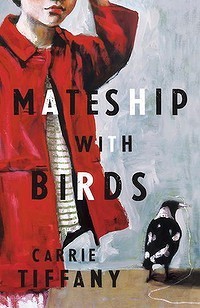 The shortlist for the inaugural Stella Prize has been announced. This major new literary award celebrates Australian women’s writing. It’s named after Stella Maria ‘Miles’ Franklin, and rewards one writer with a significant monetary prize. Congratulations to the shortlisted authors! The winner will be announced in Melbourne on 16 April, and will receive a cash prize of $50,000.
The shortlist for the inaugural Stella Prize has been announced. This major new literary award celebrates Australian women’s writing. It’s named after Stella Maria ‘Miles’ Franklin, and rewards one writer with a significant monetary prize. Congratulations to the shortlisted authors! The winner will be announced in Melbourne on 16 April, and will receive a cash prize of $50,000.The shortlisted titles are:
The Burial (Courtney Collins, A&U)
Questions of Travel (Michelle de Kretser, A&U)
The Sunlit Zone (Lisa Jacobson, Five Islands Press)
Like a House on Fire (Cate Kennedy, Scribe)
 Sea Hearts (Margo Lanagan, A&U)
Sea Hearts (Margo Lanagan, A&U)Mateship with Birds (Carrie Tiffany, Picador).
Chair of the judging panel Kerryn Goldsworthy said the shortlist ‘features a wide variety of subject matter and genre … The list contains a collection of short stories and a verse novel; it includes fantasy, speculative fiction, two historical novels and one that has been described as Australian Gothic,’ said Goldsworthy. ‘There are stories set in the past, the present and the future; there are stories set in both urban and rural Australia as well as in other countries and imagined places.’
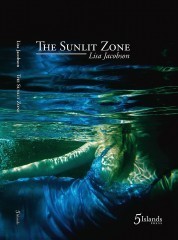 Goldsworthy also commented that the judges noticed a strong common theme in a number of the shortlisted books. ‘Sea Hearts, The Sunlit Zone and Mateship with Birds all explore in thoughtful, imaginative and unexpected ways the relationships and the boundaries between the human and the non-human, showing where those boundaries are weakest and might be broken down.’ It is a great thrill to read this last comment. The theme of blurred boundaries between the human and non-human world is of great interest to me, and one that I explore in my own books.
Goldsworthy also commented that the judges noticed a strong common theme in a number of the shortlisted books. ‘Sea Hearts, The Sunlit Zone and Mateship with Birds all explore in thoughtful, imaginative and unexpected ways the relationships and the boundaries between the human and the non-human, showing where those boundaries are weakest and might be broken down.’ It is a great thrill to read this last comment. The theme of blurred boundaries between the human and non-human world is of great interest to me, and one that I explore in my own books.It’s wonderful to see it coming into fashion!
.


March 28, 2013
Best Australian Blogs Competition
 I’m pleased and excited to announce that this blog has been nominated for the Best Australian Blogs Competition! Thank you to whoever nominated me. The competition is an initiative of the Australian Writers’ Centre. It’s designed to celebrate, showcase and support the power and diversity of the writing that’s happening in the Australian blogosphere. You can follow the centre and the competition on Twitter. The hashtag is #bestblogs13.
I’m pleased and excited to announce that this blog has been nominated for the Best Australian Blogs Competition! Thank you to whoever nominated me. The competition is an initiative of the Australian Writers’ Centre. It’s designed to celebrate, showcase and support the power and diversity of the writing that’s happening in the Australian blogosphere. You can follow the centre and the competition on Twitter. The hashtag is #bestblogs13.The 2013 competition launched on Thursday 28 February, with prizes including cash, writing courses and books to be won. This year the national competition has received more than a thousand entries. Coordinator Rose Powell says: “We’re looking forward to another big competition as the Australian blogosphere has grown and strengthened considerably in the last year.” The 2012 winner, Eden Riley, is now a full time blogger and regularly speaks about blogging at conferences, and with marketers and media.
So, if you feel like voting for me, or for one of the other nominees, now’s the time! Just click on this People’s Choice link. Readers, followers, friends and family can vote in the competition until 5pm on Tuesday 30 April 2013. Although entrants need to be Australian, people from any country can vote. Okay, I’m off to do a bit of blog housekeeping …
The 2013 competition features:
Five category winners each with an excellent judge
A People’s Choice Award round
Five special awards for outstanding posts or potential.
The five categories are:
Commentary to be judged by Greg Jericho, author and social commentator
Personal/parenting to judged by author and blogger Kerri Sackville
Lifestyle/hobby to be judged by veteran editor and publisher Marina Go;
Words/writing to be judged by Brandon Van Over, managing editor and Random House; and
Business to be judged by Flying Solo founder Robert Gerrish
The 2013 winner will receive:
$1500 worth of writing courses at the Australian Writers’ Centre
$1000 in cash
A one-hour mentoring session with Brandon Van Over, managing editor at Random House, to discuss publishing a book based on their blog or any other writing projects the blogger wishes to discuss.
$500 worth of books from Random House.

March 23, 2013
What Makes a Good Story?
Currawong Creek is all set to be published in June. I’m now 20,000 words into my new novel, and have been dedicating a fair bit of thinking time to the deceptively simple question of what makes a good story?
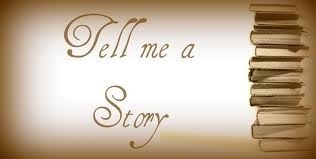 For me, the most important thing is that a writer needs to have something to say. Now this might appear to be self-evident, but think about it. Have you ever been bailed-up by someone who can talk and talk and talk, but really, has nothing to say? You begin to look for escape routes, ways to politely excuse yourself. It’s easier than that for readers. For if a novel isn’t animated by a powerful theme, then the reader can just close the book.
For me, the most important thing is that a writer needs to have something to say. Now this might appear to be self-evident, but think about it. Have you ever been bailed-up by someone who can talk and talk and talk, but really, has nothing to say? You begin to look for escape routes, ways to politely excuse yourself. It’s easier than that for readers. For if a novel isn’t animated by a powerful theme, then the reader can just close the book.
 A good writer in my view, writes from the heart. And an interesting novel must in some way take a stand. It must confront its reader, by presenting conflicting values and beliefs. Think of your favourite books, and consider for yourself, whether or not this is true. For me, writing that lacks a point is lifeless, full of ornamental adjectives and decorative imagery maybe, but lifeless just the same. Readers won’t waste their time on sentence after sentence without meaning, BUT If the writer believes, that whatever he or she has to say, MUST be said, that passion will come through the pages and grip us, as readers. We’ll care about the characters, we’ll suffer with them, we’ll hate them and love them. So my advice to all budding story tellers is to honour your convictions, whatever they are. Let them power your story. Let them challenge your readers, and make your story worth the telling. Care a lot about the subject of your writing and it will show.
A good writer in my view, writes from the heart. And an interesting novel must in some way take a stand. It must confront its reader, by presenting conflicting values and beliefs. Think of your favourite books, and consider for yourself, whether or not this is true. For me, writing that lacks a point is lifeless, full of ornamental adjectives and decorative imagery maybe, but lifeless just the same. Readers won’t waste their time on sentence after sentence without meaning, BUT If the writer believes, that whatever he or she has to say, MUST be said, that passion will come through the pages and grip us, as readers. We’ll care about the characters, we’ll suffer with them, we’ll hate them and love them. So my advice to all budding story tellers is to honour your convictions, whatever they are. Let them power your story. Let them challenge your readers, and make your story worth the telling. Care a lot about the subject of your writing and it will show.
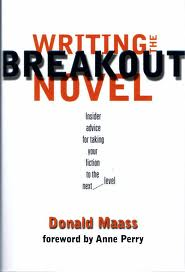 I’d like to finish with nine gems from Donald Maass, legendary New York literary agent. His seminal work, Writing The Breakout Novel has long been my bible.
I’d like to finish with nine gems from Donald Maass, legendary New York literary agent. His seminal work, Writing The Breakout Novel has long been my bible.
Think writing tools, not rules.
Emotions are what connect us to the characters of a novel. What engages your heart will engage your reader.
Create interiority. Create an emotional landscape that the characters travel through–your story’s interiority.
Reveal yourself through your fiction by writing from a personal place, a place of passion, a place of experience, a place that matters. Give these emotions and motivations to your characters.
Genre categories have become a palette from which writers may draw from to create unique hybrids. Great fiction will not be bound by conventions.
Surprise your readers. Don’t just write about the emotions that they expect. Think about the strongest emotions that you have experienced and then think about the underlying ones, the subtle ones. Write about those emotions instead of what the reader would expect from the scene/plot. Again, surprise your readers.
Write your stories like they matter, and they will matter. Powerful fiction comes from a very personal place.
Readers read to make sense of the world.Your reader wants some kind of insight into the antagonist. Who looks up to your antagonist? What does he have to gain? To lose? Why must he reach his goals? How much will he lose to meet his goal? What will he gain? Help your reader view life through the villain’s motivations and perspective. Make your antagonist multi-dimensional.
Beautiful Writing + Commercial Writing (page turners) = High Impact Writing.






